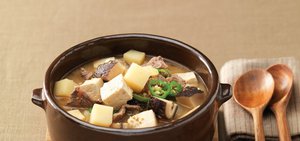Food
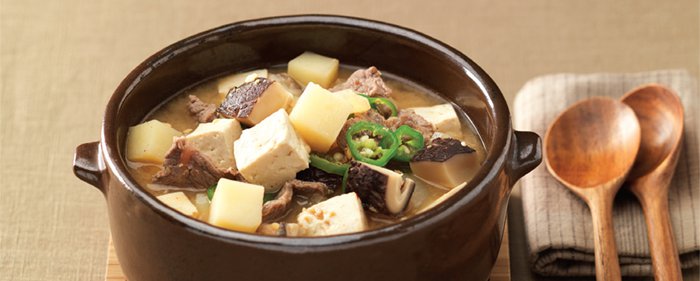
Food
Since ancient times, the Korean people have believed that food and medicine share the same origin and hence perform the same function, following the adage that “food is the best medicine.” They believe that health and illness alike come from the food they consume and how they eat it, and this idea has played a crucial role in the development of traditional Korean medicine whose basic principle is that we should use medicine only after food has failed.
Traditional Fermentation of Food
One of the key words to understanding traditional Korean food is fermentation, a metabolic process that helps food to “mature” so that it can be stored for a longer period. The Korean foods that best represent the tradition of fermentation developed in Korea include doenjang (soybean paste), ganjang (soy sauce), gochujang (chili paste), and jeotgal (fermented fish sauce). The fermentation can take anywhere from several months to several years.
Doenjang (Soybean Paste) and Ganjang (Soy Sauce)
Two of the most important items of traditional fermented food in Korea are doenjang and ganjang. To make them, it is necessary to soak soybeans in water and boil them until fully cooked. Then, they must be pounded and formed into brick-shaped lumps, and left to dry and ferment. Then, they are placed in salted water in a large pot along with dried red chili and heated charcoal, which help remove impurities and odors during the fermentation process. The beans thus prepared are then left for about two to three months until they become fully fermented. This product should then be divided into two, solids and liquid, of which the former needs to be brewed for over five more months and the latter for over three months to develop a full flavor and taste. Just like wine, soy sauce tends to have a richer flavor and taste when brewed for a longer period.
Gochujang (Chili Paste)
Gochujang is a traditional Korean condiment made by fermenting a mixture of soybean malt, salt, and chili pepper powder with a blend of powdered rice, barley, flour, and malted barley. Gochujang has long been one of the most important traditional condiments among Korean people, whose palates have evolved toward a preference for hot and spicy foods since they were introduced to chili several hundred years ago. Chili and gochujang are now often regarded as a symbol of the vibrant, energetic disposition of Korean people.

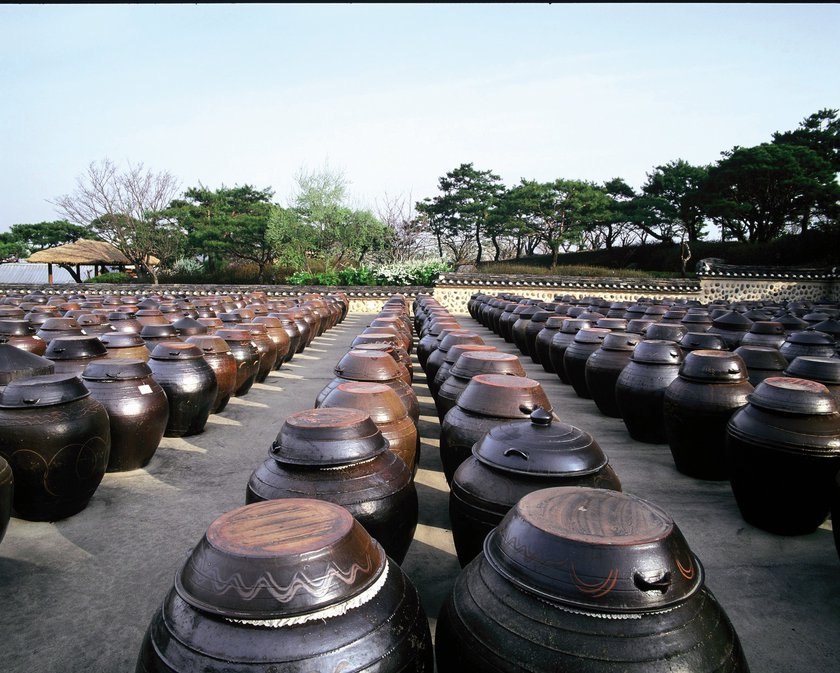
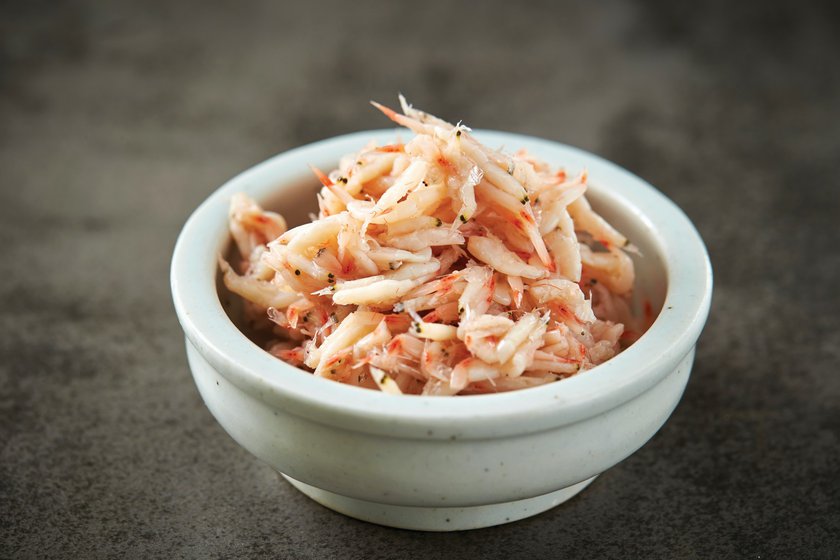
Jeotgal (Salted Seafood)
Jeotgal is almost an indispensable kimchi seasoning and a very popular condiment used to enhance the taste of food. It is made by mixing one of a variety of seafood (such as anchovy, shrimp, oyster, or clam) with salt, or with other condiments in addition to salt, and fermenting it in a cool place. It is said that the longer it is fermented, the better it tastes. The tradition of making fermented fish sauce yielded several special delicacies including sikhae, which is made by fermenting fish mixed with rice and condiments.
Kimchi
Kimchi, which is gaining a worldwide reputation as one of the representative Korean dishes, has been praised for its anti-carcinogenic properties and nutritional value, as well as numerous variations that create excitingly diverse flavors and tastes. The most common type of kimchi is made by mixing salted white cabbage with kimchi paste made of chili powder, garlic, spring onion, Korean radish ginger, fish sauce, and other ingredients like fresh seafood. Kimchi can be eaten fresh but is normally consumed after fermentation for several days. Some prefer mugeunji, which is fully fermented for over one year.
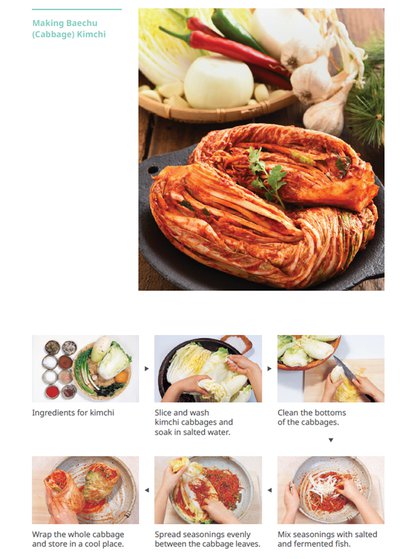
The ingredients of kimchi vary according to regions and special local produces and traditions. Seoul, for instance, is famous for gungjung kimchi (royal kimchi), bossam kimchi (wrapped kimchi), chonggak kimchi (whole radish kimchi), and kkakdugi (cubed radish kimchi), and Jeolla-do is well known for godeulppaegi kimchi (Korean daisy kimchi) and gat kimchi (leaf mustard kimchi).
Kimchi is getting well-known and well-received around the world. In 2001, the Codex Alimentarius Commission designated Korean kimchi as an international standard instead of Japanese kimuchi, and in 2012 officially published the term of cabbage made in Korea as “kimchi cabbage,” which had previously been referred to as “Chinese cabbage” until then. In 2003, when severe acute respiratory syndrome (SARS) was spreading throughout the world, foreign media reported that the Korean people were safe from SARS because they eat kimchi, which triggered global attention to its efficacy. In 2006, Health Magazine, an American monthly, selected kimchi as one of the world’s five healthiest foods.
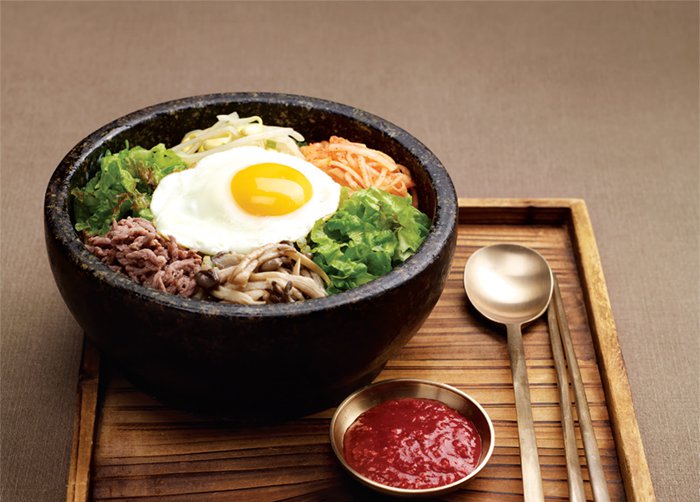
Bibimbap
Bibimbap (literally “mixed rice”) is a Korean rice dish served after mixing it with an assortment of fresh and seasonal vegetables, fried egg, minced beef, and other ingredients. It is also served in a sizzling hot stone bowl, which is called dolsotbibimbap (Hot Stone Pot Bibimbap). The dish is closely related to Jeonju, a UNESCO-designated Creative City of Gastronomy, where food festivals such as the Bibimbap Festival are held every autumn, thereby attracting gastronomes from across South Korea and beyond.
Bibimbap, along with kimchi and bulgogi, is considered one of the three representative dishes of Korean cuisine. It is getting more preferred as an airline meal, and more efforts have been put into the development of different bibimbap products to popularize Korean cuisine as a universal global food.
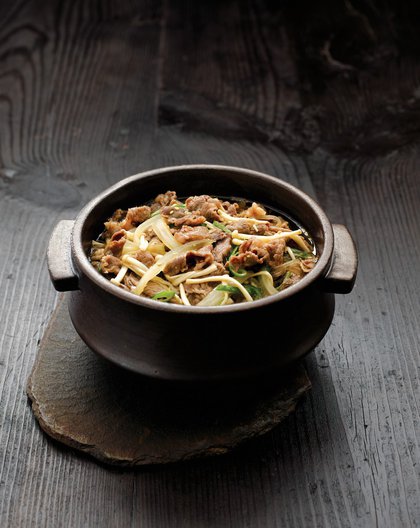
Bulgogi
Bulgogi, which literally means “fire meat,” refers to a traditional Korean dish made by grilling meat after marinating slices of beef or pork in sweet soy sauce mixed with a great variety of condiments mainly made with soy sauce, sugar, and pear juice. Bulgogi is also popular among foreigners, so many South Korean fast-food restaurants serve bulgogi-flavored fast food such as bulgogi hamburgers and bulgogi pizza.
Japchae (Stir-Fried Glass Noodles and Vegetables)
Japchae is one of the most popular traditional celebration dishes. Japchae is a mixture of various ingredients, creating a unique taste. It is made by mixing boiled glass noodles, fried vegetables such as spinach, carrots, and mushrooms, meats, and other ingredients. It was first served at a royal banquet in the Joseon dynasty in the 17th century. For this reason, japchae is considered a luxurious and elegant dish and always served on special occasions such as a birthday, a wedding reception, and a 60th birthday party.
Jeon (Pancakes)
Jeon, also known as Korean pancakes, refers to all kinds of food made by cutting ingredients into slices and coating them with wheat flour and an egg wash before frying them in oil. It can be made with different ingredients such as meat, fish, and vegetable. Some jeon called hwajeon is made out of glutinous rice flour and edible petals from seasonal flowers such as azalea and chrysanthemum.
Jeon is eaten itself, but the taste becomes richer with soy sauce. Preferred by all people of ages, it is served on feasts, holidays, and other important occasions.
Tteok (Rice Cake)
Tteok, or Korean rice cake, refers to a range of sticky cakes made by steaming powdered rice with other grains, usually beans, or by pounding boiled rice into different shapes and textures. While eaten as a staple food, rice is sometimes served as a variety of rice cakes on special family or communal occasions such as birthday parties, wedding receptions, memorial services, and traditional holidays. Rice is the main ingredient of tteok, but it is often mixed with other grains, fruits, nuts, and herbs such as mugwort, red bean, jujube, soybean, and chestnut.
Korean people serve different varieties of traditional rice cakes with various symbolic meanings on special occasions. For instance, one is baekseolgi (white steamed rice cakessnow-white rice cake) served on the first birthday of a baby as it symbolizes a long life. Another is patsirutteok (red-bean-coated rice cake) used when they start a business as the red color is believed to help repel evil forces. They celebrate New Year’s Day with tteokguk (rice cake soup), which consists of a broth with rice flakes, and Chuseok (the 15th Day of the 8th Lunar Month) with songpyeon, bite-sized half-moon shaped rice cakes stuffed with honey, chestnut, soybean, or sesame mixture. Nagwon-dong is famous for a cluster of rice cake houses still operating downtown in Seoul.
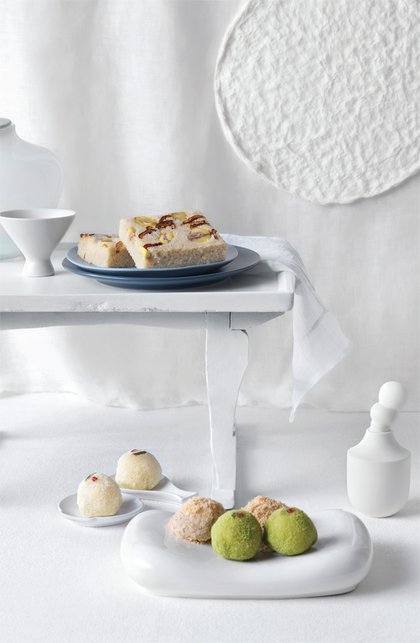
Juk (Porridge)
Juk, cooked in water for a long time with various grains, is a Korean-style porridge that was usually used to treat children, the elderly, or people suffering from digestive problems. In recent years, juk houses have sprung up in many parts of South Korea. They usually prepare the dish with a wide range of ingredients, mostly grains and vegetables, developing numerous varieties, some of which are now served at small specialty dinners. Even more, companies present different instant porridges for commercial sale.
Noodles
Korean people have developed a wide range of noodle dishes with different symbolic meanings. One of such dishes is janchi guksu (noodles in broth), which is served in a hot anchovy broth to the guests at a wedding reception. This dish is so closely related to the idea of a happy marriage in Korea that a question such as “When can we eat noodles?” would readily be understood to mean, “When do you plan to get married?” It is also eaten to celebrate birthdays because it symbolizes a long, healthy life. Korean people also have a long-established tradition of eating naengmyeon, cold buckwheat noodles. There are two main varieties: Pyongyang-style and Hamheung-style cold buckwheat noodles. The former is served as a cold soup containing noodles while the latter with a spicy dressing and eaten all mixed.
Hanjeongsik (Korean table d’hote)
Hanjeongsik, also known as the Korean table d‘hote, normally consists of cooked rice, soup, and three to five (largely vegetable) side dishes. Although the higher standard of living contributes to the creation of more new side dishes and thus the Korean table d‘hote becomes more luxurious involving tens of dishes, it always consists of three basic dishes: rice, soup, and kimchi. Two cities in the southwestern part of South Korea, Jeonju and Gwangju, are particularly famous for this traditional Korean-style full-course meal.

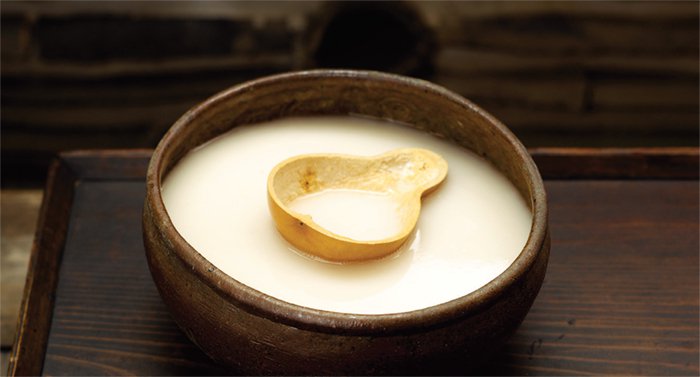
Korean Temple Cuisine
Korean Buddhist temples have maintained their own culinary traditions, creating a wonderful range of vegetable dishes and ingredients and developing recipes to provide proteins and other substances required for the monks and nuns to remain healthy while refraining from flesh meat. Temple cuisine is now preferred by vegans and other people who follow special diets for health-related reasons.
Alcoholic Beverages
A wide variety of alcoholic beverages have been developed across different parts of South Korea to meet the needs specific to local communities during holidays, festivals, memorial rites, and other commemorative occasions. Currently, some 300 traditional beverages have survived, including Munbaeju (pear-flavored liquor) and Songjeolju (pine knot liquor) in Seoul; Sanseong Soju (distilled liquor) in Gwangju, Gyeonggi-do; Jindo Hongju (red liquor) in Jeollanam-do and Jeonju Igangju (distilled liquor) in Jeollabuk-do; Hansan Sogokju (rice wine) in Chungcheongnam-do; Geumsan Insamju (ginseng liquor) in Chungcheongnamdo; Gyodong Beopju (rice liquor) and Andong Soju (distilled liquor) in Gyeongju, Gyeongsangbuk-do; and Okseonju (distilled liquor) in Hongcheon, Gangwon-do.
Makgeolli (rice wine) is one of the most popular traditional alcoholic beverages across South Korea. It is also known by other names such as nongju (farmer’s wine), takju (cloudy wine), and dongdongju (rice wine). It is made by a process in which steamed rice, barley, or wheat is mixed with nuruk and left to ferment, and has an alcohol content of 6%–7%, making it a fairly mild drink. Recognized as a healthy fermented liquor, it is gaining popularity among foreign tourists visiting South Korea.
Another hugely popular alcoholic beverage is soju, which is made by adding water and flavorings to alcohol extracted from sweet potatoes and grains. Although its alcohol content varies but is significantly higher than makgeolli, it is widely loved by ordinary people for its affordable prices in South Korea and is also rapidly gaining enthusiasts abroad.

